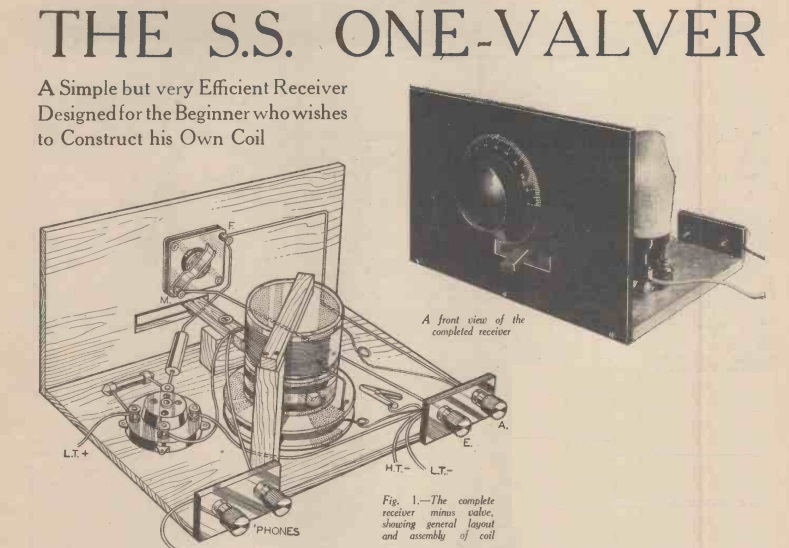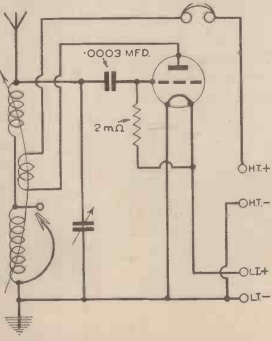 When the September 1939 issue of Practical Mechanics was on the newsstands, Britain was already at war. But if someone needed a radio, this simple design was perfect for wartime austerity. The only manufactured components needed were the tube, one variable capacitor, one fixed capacitor, one resistor, and the headphones.
When the September 1939 issue of Practical Mechanics was on the newsstands, Britain was already at war. But if someone needed a radio, this simple design was perfect for wartime austerity. The only manufactured components needed were the tube, one variable capacitor, one fixed capacitor, one resistor, and the headphones.
The coil was homemade, and regeneration, or “reaction” as the British liked to call it, was courtesy of a moving tickler coil, which could be moved in and out of line with the main coils. For mediumwave reception, the top half of the coil was used. To pull in the longwaves, the bottom half was added in by unhooking the clip shoring out the lower coil. Of course, by the time the magazine came out, the domestic longwave service of the BBC was off the air for the duration, although the set probably could have picked up programs from the Continent.
The article doesn’t specify what tube is used, although probably just about any triode would work just fine. It called for 60 volts of B+, although the article noted that there would be an increase in signal strength with 70-80 volts.
The “S.S.” in the name stands for the “simplest of the simple.”

